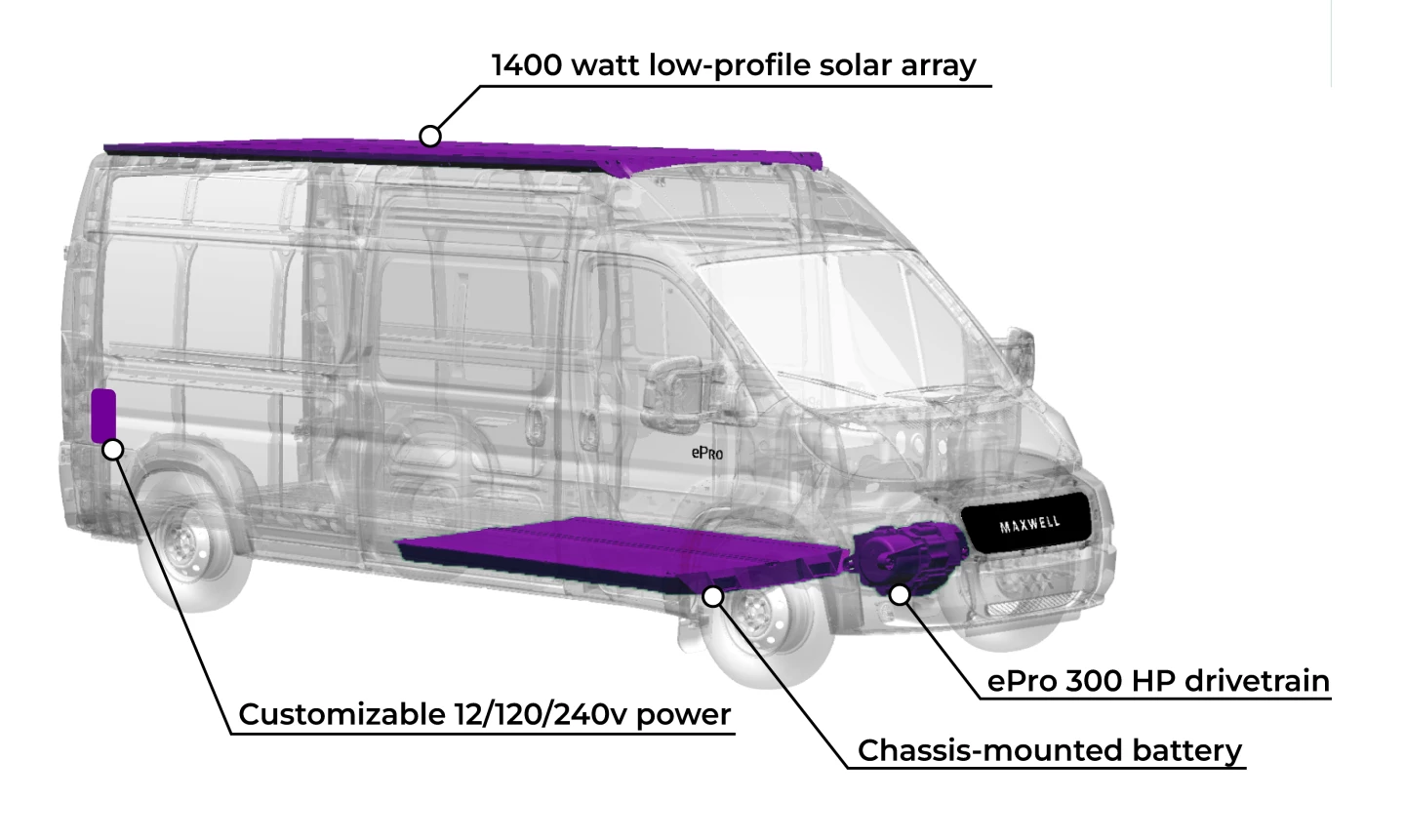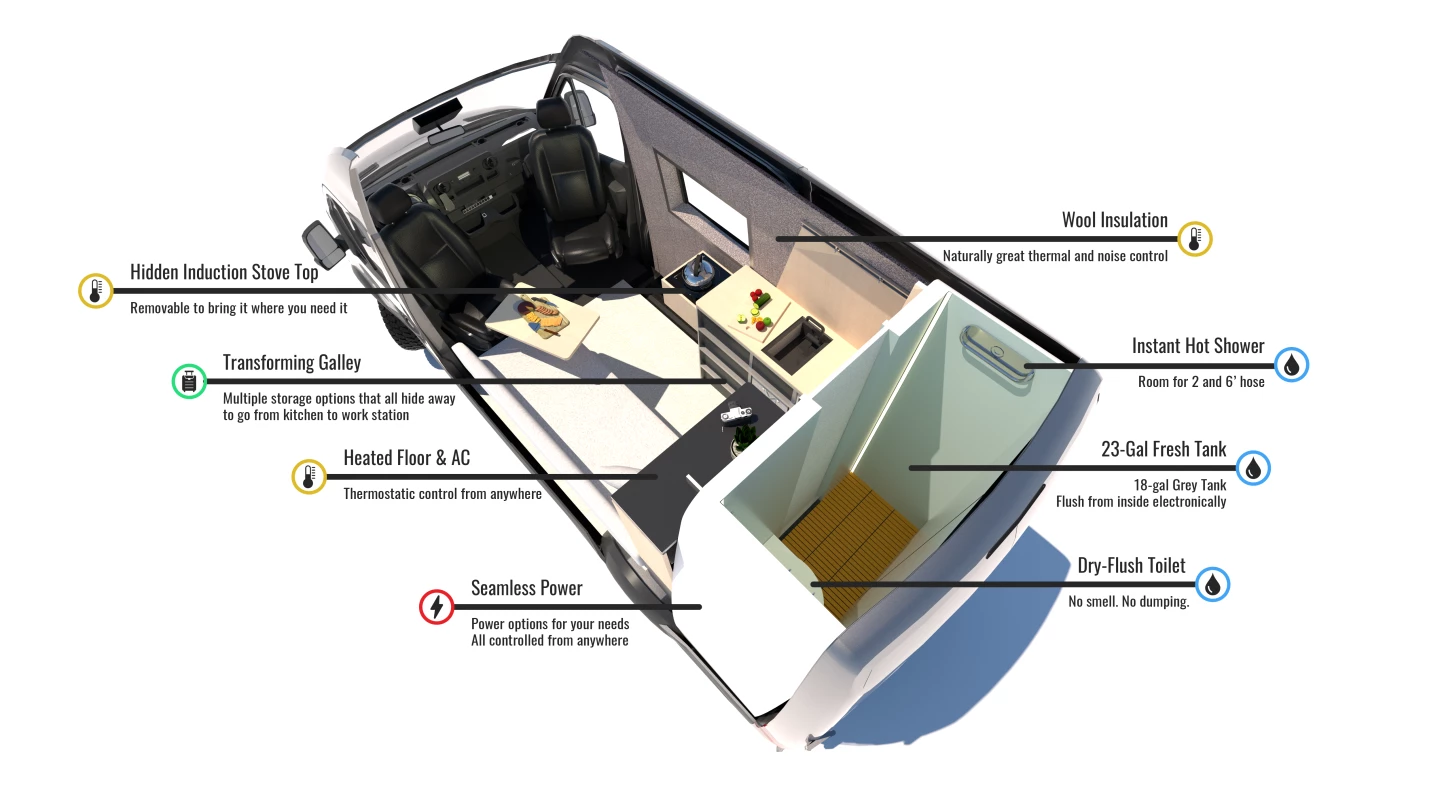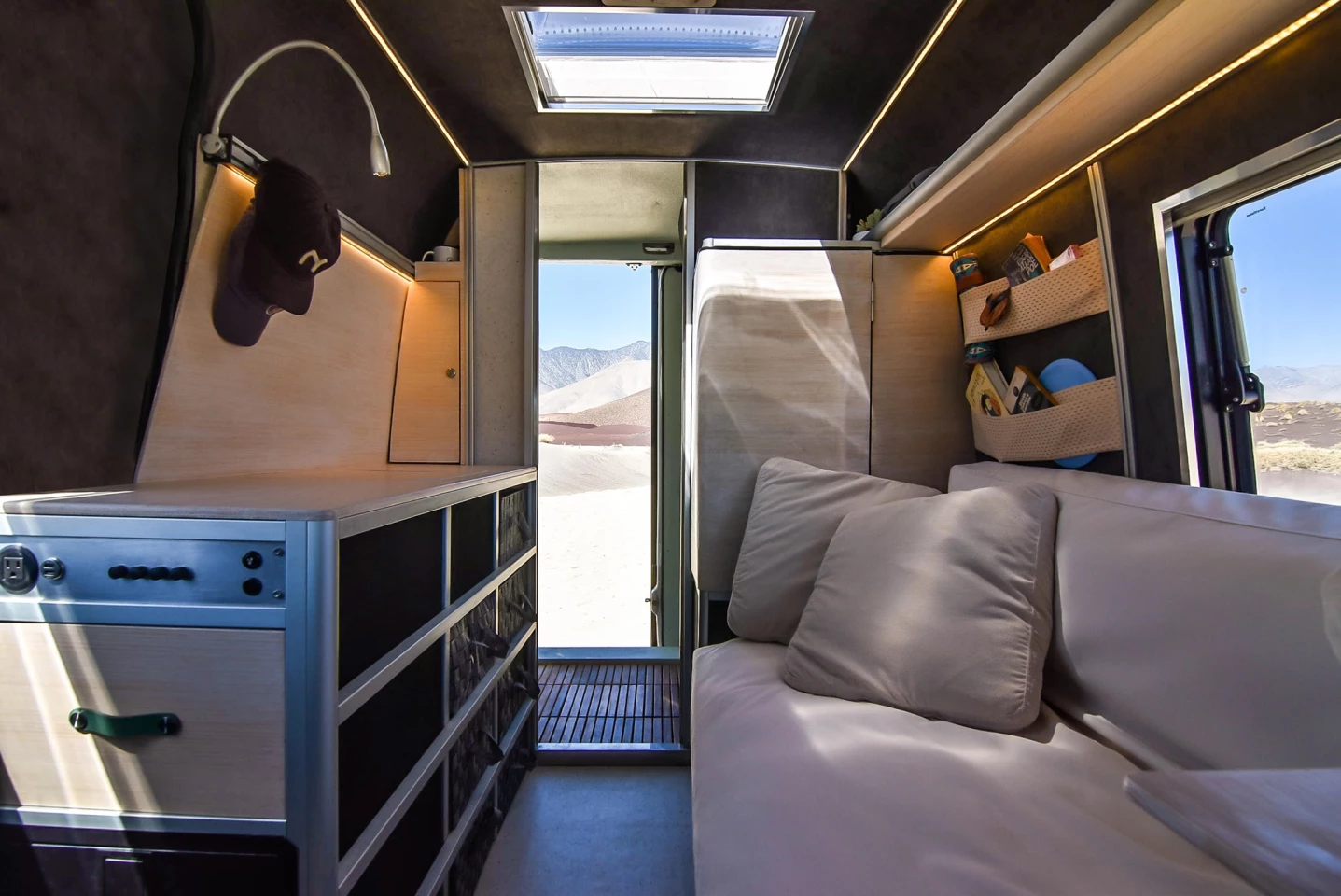Electric RVs have been frustratingly slow to materialize in North America, and when they do show up, they tend to have ranges insufficient for everyday cars, let alone leisure vehicles meant to tour long distances. California's Maxwell Vehicles offers a longer-range e-camper van solution that's ready to go the distance.
Instead of creating a camper out of an under-ranged factory van, Maxwell converts ICE Ram Promasters with its own 250-mile (402-km) electric powertrain. Not only is that range double some of the competition, but it's backed by a full-length solar roof that can add double-digit mileage each day. Buyers can select a turnkey electric camper van or a more budget-friendly electric DIY van.
As opposed to the typical electric camper – a camper conversion added to an existing electric vehicle – Maxwell's Vanacea is a more purpose-built electric camper van, with an electric package that's specced around touring and camping. This means that the single battery system runs both the "ePro" electric drive and the interior camping equipment. The available 1,400-W solar roof that stretches the entire length of the van charges that battery pack throughout the day, offering up to 20 miles (32 km) of added driving range each day, or 8.5 kWh of usable battery power for running equipment.

Maxwell mounts the 125-kWh battery pack below the Promaster floor, maintaining the full cabin volume for camper conversions. Along with that full-range 250-mile battery option, it offers a smaller 74-kWh battery for an estimated range up to 170 miles (273 km). The battery supplies the power needed to drive the front wheels via a 300-hp front-mounted electric motor. The van comes ready for 200-kW fast-charging that tops the battery off in as little as 30 minutes. It can also be charged, albeit at a much slower rate, via a standard RV hookup, ensuring that a vehicle charge is not difficult to access.
When parked at camp, the Vanacea's battery powers all onboard equipment, including the heating, air conditioning and instant hot water. The build includes a 7,800-W inverter for supplying AC power. A 10-in touchscreen provides monitoring and control of the electrical equipment, and a mobile app packages it up for on-the-go access.

To create its full floor plan, Maxwell has partnered with Los Angeles camper van shop Nook Vans for a highly functional, livable layout. Nook adapts one of its standard floor plans to battery-powered camping in a package it calls the "E.Nook." The company flip-flops the wet bathroom and bed from their more common locations, situating a convertible sofa/double bed lengthwise behind the driver's seat. The bathroom fills out the width of the rear, providing enough space for a shower room, dry toilet and storage.
The bathroom location inside the rear doors also works well as a mudroom, a place to rinse and dry dirty, wet gear, clothing and body parts without dragging them through the greater interior. It's also a good place to store gear that you don't want near your living room/kitchen area.

On the passenger side of the cabin, the transforming kitchen block houses a slide-out dual-spot induction cooker, 139-L fridge/freezer, sink, and storage bin stack for flexible organization. Once cooked, meals can be enjoyed on the sofa or the swivel cab seats using the multi-positional swivel table.
Maxwell looks to outfit all types of van life customers who want to go electric. Buyers can start off with a US$53,500 powertrain conversion package for their own new or used Promaster van chassis, setting themselves up for a DIY electric camper fit-out. They can also bring in an already-converted Promaster camper van for electrification. The most comprehensive, turnkey option is a new, fully converted camper van with Maxwell's ePro powertrain and Nook's interior, which carries a base price of $190,000.
Those prices certainly aren't cheap, but they're not out of line with what people are already spending on ICE camper vans. Maxwell offers a very intriguing option for shoppers with that kind of camper budget who would love to go fully electric. And while 250 miles undoubtedly falls short of what many a buyer would like out of an RV, it's comparable to what next-gen base vans like the soon-to-launch Mercedes e-Sprinter and the BrightDrop Zevo 600 advertise and certainly better than older models like the 125-mile Ford E-Transit. The single battery system and its ability to add range via solar charging is also a nice streamlined advantage.

All in all, this is the best-looking electric camper van package we've seen offered for purchase on the American market ... by a wide margin. That's not saying too much since we've only seen one other electric camper van for sale, and a couple of concepts and rentals, but the Vanacea is definitely a nice option to have ahead of the wider availability of higher-range electric vans like the Volkswagen ID. Buzz and aforementioned e-Sprinter.
Sources: Maxwell Vehicles, Nook Vans



















